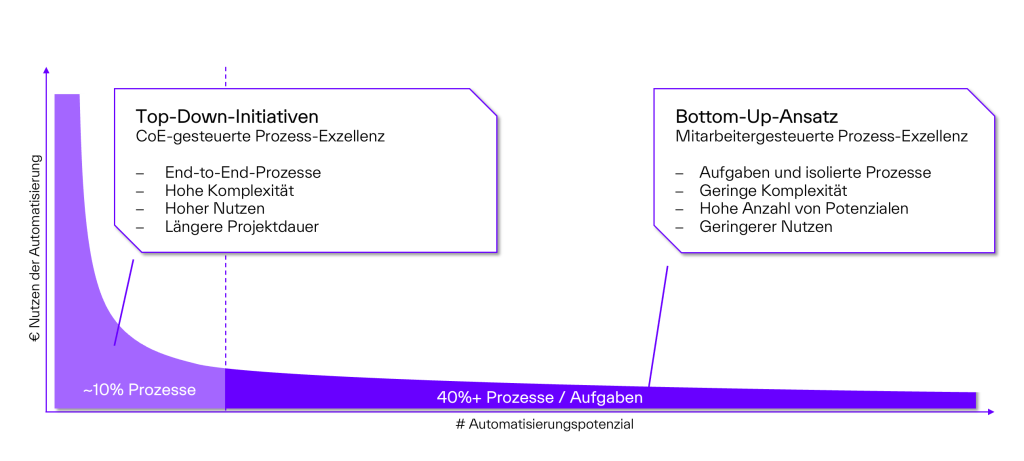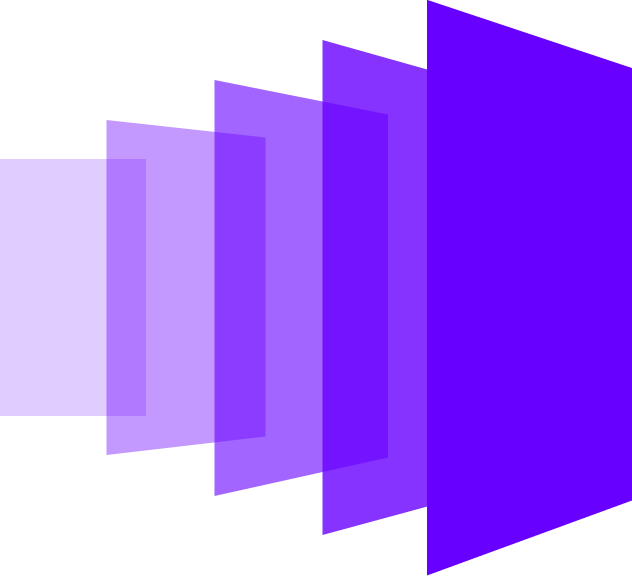RPA potential & UiPath Automation Hub
Optimized identification of RPA potentials & automation management with the UiPath Automation Hub
Robotic process automation (RPA) has already proven itself in many companies in recent years and has become an integral part of their digital strategy. Sooner or later, companies will be confronted with the question “How do I scale RPA in my company?”. Even companies that are just starting their RPA initiative should start thinking about this now. To find an answer to this question, it makes sense to take a closer look at the individual phases of the automation journey and implement optimizations at an early stage. Even in one of the first phases, there is great potential for optimization that is essential for the completeness of the automation landscape: process identification.
Identifying RPA potential with top-down initiatives
During process identification, potential processes that are suitable for automation with RPA are collected and then subjected to an initial feasibility analysis. Here, automation ideas are evaluated according to their benefits and the complexity of their implementation and then prioritized.
Top-down initiatives that take a closer look at individual business areas and their processes are often used for initial process identification. Tools such as process mining are often used in these projects in order to achieve the goal of identifying processes with great benefits and a high ROI more efficiently and quickly. The results of these initiatives are extensive RPA potentials, some of which are to be automated end-to-end by RPA experts. Due to the complex processes to be automated, these RPA projects usually have long preparation and development times to ensure success. At the same time, the automation of these processes results in high savings and productivity increases that are commensurate with the project costs and result in a high ROI.
The importance of the bottom-up approach and employee involvement
Unfortunately, if the top-down approach is used exclusively, smaller potentials remain under the radar. Small sub-processes and individual activities at each workstation can be automated in a very short time and represent the large mass of automation potential in the company. The implementation of small RPA projects therefore costs little, but can bring great benefits, especially in terms of employee satisfaction and the acceptance of RPA initiatives. This supports change management in the company and achieves rapid success.
A bottom-up approach should be introduced to identify this potential. As a rule, every employee knows the activities that slow them down and can be automated quickly and effectively. In order to pass on this potential to the RPA Center of Excellence and give employees a voice, appropriate processes and tools are required.
Standardization is the critical phase in the implementation of RPA software. Experts estimate that companies spend 70% of the available resources in this phase.

Coordination with the UiPath Automation Hub
To bring these two approaches together and enable the efficient organization and planning of automation projects, UiPath has provided a platform: the UiPath Automation Hub.
The Automation Hub offers every employee the opportunity to submit ideas and at the same time guides them through the initial feasibility analysis, making it easier for the CoE to subsequently enter into further analysis. Both the bottom-up approach and the top-down initiatives benefit from the clear presentation of potential: the necessary documents, process KPIs and project roles are linked to each automation project. The employees concerned can track the current implementation status of their idea and the CoE has a tool for detailed and centralized automation planning. All of this is linked to a gamification approach so that the participation of as many people as possible is encouraged.
Automated process documentation with 'Task Capture'
Another feature that UiPath has integrated into the Automation Hub is ‘Task Capture’. This tool can be downloaded by anyone and supports the documentation of processes, which many perceive as a time-consuming and tedious step within automation. Task Capture records the execution of a process live on the screen and automatically transfers the individual steps categorized into a process diagram and the process documentation template.
A tool-supported combination of approaches brings the greatest success
In addition to strategically implemented top-down initiatives, we clearly recommend establishing a bottom-up approach in the company. In order to maintain an overview as a CoE and to make the planning and implementation of automation projects more effective, we also recommend introducing a tool such as the UiPath Automation Hub. This not only improves the organization of the RPA program, but also the involvement of all employees.
Prioritize automation ideas based on real process data and according to strategic focus without unnecessarily complicating the prioritization process.
- Process data-driven prioritization
- Strategic prioritization
- Tools for organization and prioritization




